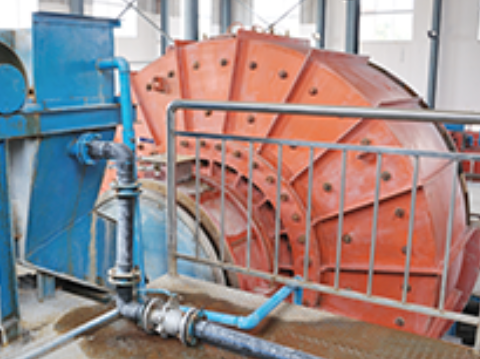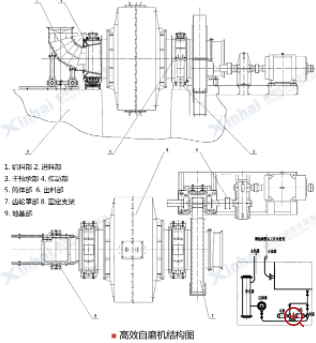Dry self-grinding is different from wet self-grinding, but the working principle is basically similar. They all require a stable feeding amount and a certain ratio between large and small nuggets. With the rotation of the cylinder, the large and small ore blocks are lifted to a certain height, and then thrown down to produce a certain impact grinding effect to grind the ore. On the one hand, the large ore acts as a steel ball, impacting and grinding the smaller ore, and at the same time, it can also grind the large ore.

In the radial direction of the cylinder, the large ore is in the rotating inner layer (near the center of the mill), and there are many shedding movements, forming a shedding area and a grinding area. Its cycle period is short, and it quickly falls to the lower part of the cylinder. , was crushed by the impact of the ore falling from the waterfall. The medium-sized ore is in the middle layer, and the fine particles are more concentrated in the outer layer. They are lifted to a larger height, and the fine particles are thrown away from the cylinder wall to form a waterfall area. The ore falling down from the waterfall meets the new feeding ore of the autogenous mill in the lower part of the cylinder and crushes it. After the nuggets and the grinding zone are ground to a certain particle size, they are carried out of the mill by airflow or water for classification.

The main forces for crushing ore inside the machine are as follows: ① the impact force when the ore falls freely; ② the mutual grinding and stripping force between the ores in the grinding area and the falling area; ③ the ore suddenly changes from a pressure state to a tension state. transient stress. Generally, the self-grinding machine is mainly used for grinding, accounting for 50% to 80% of the total grinding effect. Because the barrel of most autogenous mills is short, the ore stays in the autogenous mill for a short time, and most of the ore particles are ground along the crystallographic interface. Therefore, the particle size of the ground products is relatively uniform, and the phenomenon of over-grinding is less.
